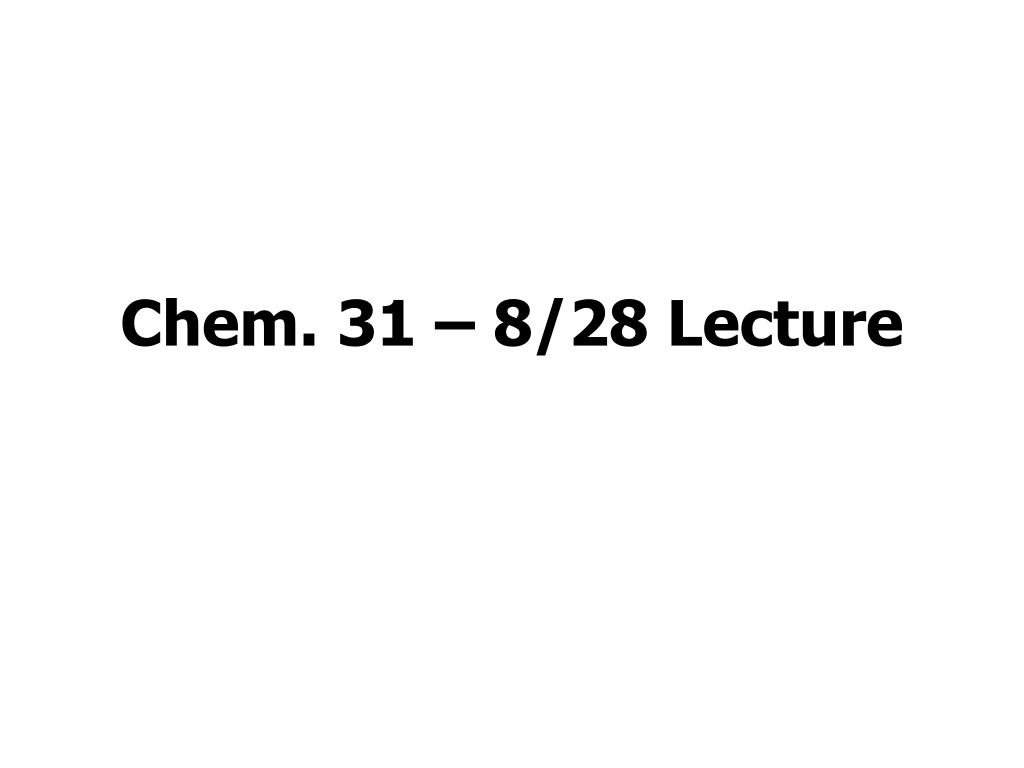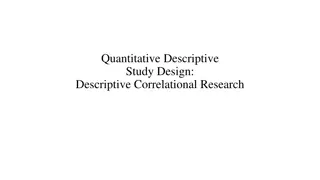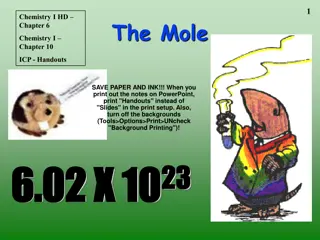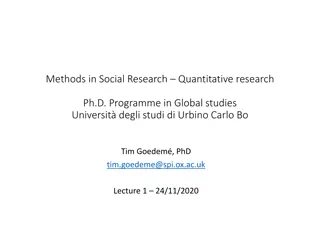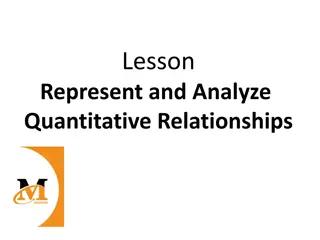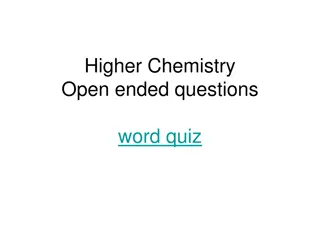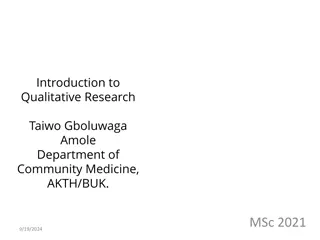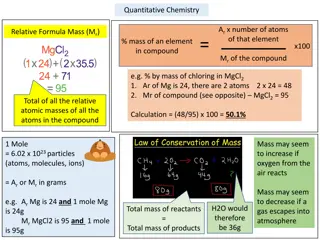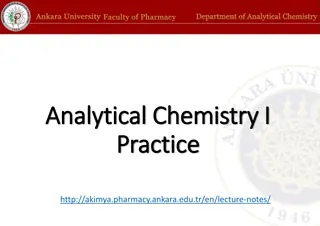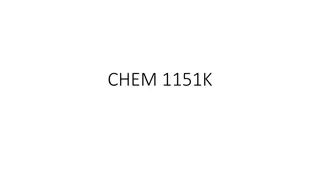Understanding Quantitative Analysis in Chemistry
Quantitative analysis in chemistry involves determining the concentration or mass of a compound in a sample, which is crucial for various applications such as measuring intoxication levels, assessing health risks, and determining the benefits or harm of substances. This course, taught by experienced instructors, focuses on the importance of chemical analysis in different industries and practical settings. Examples of chemical analysis projects highlight the real-world implications and importance of mastering this skill.
Download Presentation

Please find below an Image/Link to download the presentation.
The content on the website is provided AS IS for your information and personal use only. It may not be sold, licensed, or shared on other websites without obtaining consent from the author. Download presentation by click this link. If you encounter any issues during the download, it is possible that the publisher has removed the file from their server.
E N D
Presentation Transcript
What is Quantitative Analysis? (and Why is it important?) Quantitative Analysis is the determination of a compound s concentration (or mass or amount) in a sample Some examples of where a compound s concentration is important: level of intoxication from blood alcohol content determine whether a compound (e.g. F-in drinking water) is beneficial or harmful risk of having health problems (such as from high LDL concentrations or low HDL concentrations)
Course Instructors Dr. Roy Dixon (lecture and sect. 2 of lab) I have been teaching this class for over 20 years My educational and research background is in analytical chemistry (with work on environmental and biological problems) Now, I m teaching less as Department Chair Dr. Jahansooz Toofan (lab sect. 4, 6, and 7), Dr. Alexander Gunn (lab sect. 2) Dr. Justin Miller Schulze (lab sect. 3) and Ms. Heidi Van Atta (lab sect. 5)
Roll Call Sign in to sheet being passed around
Handouts Syllabus Other materials will be posted online
Typical Lecture Style Mix of whiteboard and Powerpoint slides Use whiteboard for working out detailed problems Use Powerpoint slides for covering review material (e.g. Chapter 1) or material where having good graphics helps Powerpoint slides will be made available on website Announcements given in first few minutes
Why is This Course Valuable? Analysis of chemicals is common in other chemistry classes (e.g. Chem. 25, Chem. 125, Chem. 141, Chem. 161, etc.). Many of the jobs both within chemical industry/pharmaceutical industry and in applied areas (e.g. environmental service and biotech) involve chemical analysis.
Examples of Chemical Analysis from Term Projects in Chemical Instrumentation (Chem 133 S 16) Biodiesel Analysis (3 projects) Biodiesel is being produced on campus from waste cooking oil Composition can affect lifetime and use in cold weather In addition, analysis is needed for problematic compounds (methanol, glycerol, other glycerides, free fatty acids) Example fatty acid: CH3(CH2)7CH=CH(CH2)7CO2H = Oleic = C18:1 O R R O H3 C OH O- O H3 C O + R' O + A D C 1 A , A D C 1 C H A N N E L A (D H F B \C A L IB R A T IO N O IL S P O N 2 0 1 6 -0 5 -0 5 1 7 -3 2 -1 0 \0 5 0 5 1 6 0 0 0 0 0 3 .D ) OH O 4.834 m V R' C18:3 C18:2 O H3 C 1 5 0 C18:1 R" O O C18 + 6.420 OH 1 4 0 C17 O C16 R" O H3 C 1 3 0 11.450 15.235 0.868 9.211 8.663 O 1 2 0 triglyceride 1.309 6.764 fatty acid methyl esters (FAMEs) 1 1 0 2 4 6 8 1 0 1 2 1 4 m in
Traditional vs. Modern Methods Characteristic Traditional Modern Equipment Glassware and balances (low cost) Instruments (high cost) Moderate Precision High Speed slow fast Sensitivity low high Selectivity minimal Good to great
Chapter 1 Measurements and Titrations No measurement is valuable unless it is given with units and some measure of uncertainty Units Chapter 1 Uncertainty Chapters 3 and 4
Units of Measure Most Basic SI base units (important ones) Measure Unit_____ Length meter (m) Mass kilogram (kg) (only one with multiplier) Time second (s) Temperature Kelvin (K) Amount Mole (mol)
Units of Measure Directly Derived from Base Units Volume: cube volume = l3 so units = m3 l Density = m/V so kg/m3 Pressure = force(kg m/s2)/area(m2) = kg/(s2 m)
Units of Measure Other metric units (not directly in SI units) Density (g/cm3) Pressure (Pascals or Pa = kg/(s2 m)) Non-metric units (used commonly) For pressure 1 atmosphere (atm) = 101300 Pa English/Other system (not emphasized here)
Units of Measure Metric Multipliers (ones you should know) Name Abbreviation Kilo k Centi c Milli m Micro Nano n Multiplier x103 x10-2 x10-3 x10-6 x10-9 Analytical chemists like small quantities. An instrument that can detect 1 fg (1 x 10-15 g) is better than an instrument that can detect 1 pg (1 x 10-12 g)
Unit Conversion Example Problem Convert the density of lead from g/cm3 to kg m-3 if density = 11.7 g cm-3.
Concentration Units General form mass moles or solute mass moles or or volume of solution solvent) (or Note: sometimes, volume is required in the denominator to be strictly considered concentration , but for this class mass ratios or mole ratios will be considered to be an expression of concentration
